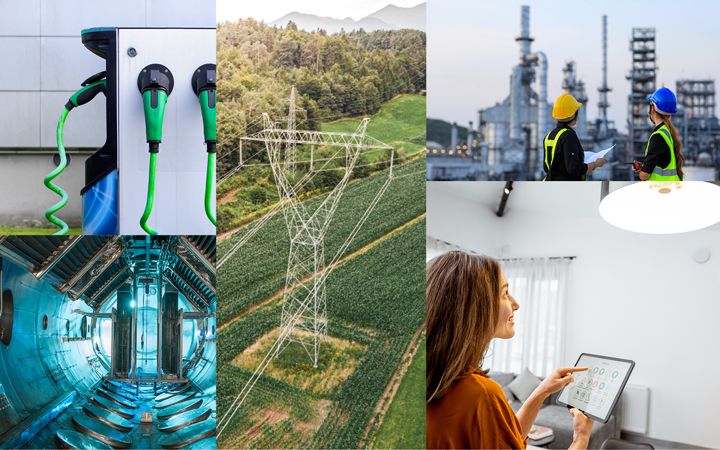
3 emerging priorities to build regional resilience to extreme weather
State and local agencies, as well as utilities, face challenges preparing for and responding to extreme weather events. From wildfire risk to hurricanes to extreme heat and more, hazard mitigation and resilience efforts at the state and regional level are critical.
ICF convened a roundtable discussion in D.C. about how to prepare for and respond to extreme weather events, featuring leaders from state and local governments, utilities, and the private sector. The roundtable participants discussed common challenges that leaders are facing, as well as the efforts they’re undertaking to build resilience and implement hazard mitigation plans. Here are three emerging priorities that surfaced during this important discussion.
1. Building resilience involves deep interconnection and interdependencies
Resilience relies on a wide range of resources and services essential to a region’s stability. From power grids and water systems to transportation networks and supply chains, strengthening regional resilience involves a wide array of considerations, collaboration, and partnerships.
Resilience and hazard mitigation are a “whole of nation” problem where risks in one region can impact another. For example, if a data center or power generation source in one part of a state is vulnerable, then everyone who depends on it is at risk—even if their own community is otherwise resilient. Another example is a potential failure of critical systems like water and waste. If there’s a failure with one critical system, it can have a downstream impact on an entire region.
These challenges highlight the need for collaboration, partnership, and an understanding of complex interdependencies to build resilience. Bringing regional system planners together for critical event scenario planning sessions helps uncover hidden interdependencies that state, local, and utility leaders may have overlooked.
In a similar context, supply chain delays are potential barriers to building resilience and implementing hazard mitigation plans. For example, communities need chlorine within the first 72 hours after a disaster to maintain clean drinking water. However, it’s difficult to source critical supplies in the immediate aftermath of a disaster when operating on a short timeline. But there are also challenges with storing critical supplies, potentially for years, before a community may need to use them.
Understanding the various constraints, interconnections, and interdependencies is critical to building and implementing effective hazard mitigation and resilience plans.
2. Prioritization is more important than ever
Recent extreme weather events are creating a sense of urgency to develop and implement hazard mitigation plans. Many state and local agencies, as well as utilities, are challenged by resource and time constraints—and uncertain funding opportunities. Yet the scope of work to adequately build resilience is increasing in many regions. Leaders face prioritization challenges in determining the most important, financially feasible measures to implement.
Various tools can simplify complex decision-making by integrating multiple variables into a single view. These include hazard mitigation plans, available funding streams, implementation timelines, total costs, and more—helping leaders prioritize projects and make informed, strategic decisions.
Changes in weather forecasting impact decision-making in the immediate lead-up to extreme weather events, such as hurricanes. Hurricanes have become more difficult to forecast due to their ability to intensify faster than in the past. This has ripple effects for state and local agencies planning for disaster response. Resources that are needed in advance of a category 1-2 hurricane are different from what’s needed for a category 3-4 hurricane. Leaders are having to adapt their preparation for natural disasters because of these changes.
3. Take advantage of available resources
Fortunately, there are multiple resources available to help inform decision-making processes to better prepare for and mitigate the effects from extreme weather events. One example is DOE’s Global Change Intersectoral Modeling System (GCIMS). This is a resource that “aims to improve the understanding of the complex interactions among energy, water, land, climate, and economics systems.” It does this by looking at “compounding short- and long-term influences on energy, water, land, climate, and economic systems over the next 10 to 100 years.”
Artificial intelligence (AI) is also emerging as a tool that can be used to prepare for extreme weather events. Emerging weather forecasts and modeling based on AI can help better predict extreme weather events. While this is still new and learning curves exist, advanced modeling capabilities would allow leaders to make better decisions to protect communities in the lead up to extreme weather events.